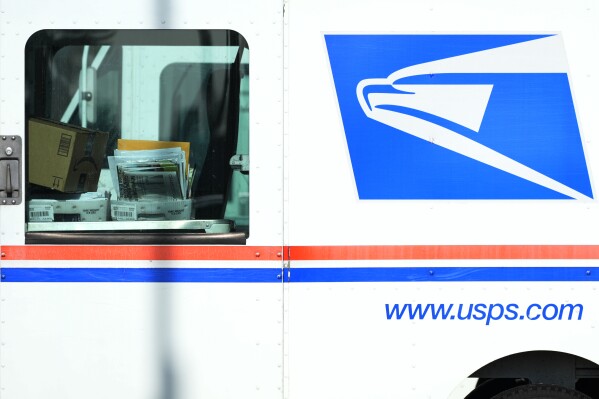When insuring your car you will want the peace of mind that as many eventualities are covered as possible. That’s why many drivers opt for the highest level of insurance money can buy – comprehensive cover.
Not only will you be covered for car damage you are involved with, but it also covers third-party damage, fire and theft. That being said, just because it’s fully comprehensive doesn’t mean you should expect to get a payout in every instance of damage.
Here, Telegraph Money explains what fully comprehensive car insurance actually covers you for – and the exclusions you’ll have to pay for yourself.
What is fully comprehensive car insurance?
A comprehensive policy is the most extensive cover you can get, covering you for a wide range of repairs or replacement costs if your car is damaged or written off, stolen, or catches fire.
It also typically covers claims made against you for people, passengers and their property.
What does fully comprehensive car insurance cover?
Individual policies will vary between providers, but typically a comprehensive policy will cover:
Theft and vandalism
Your car will be covered if it’s damaged or destroyed by theft or attempted theft. It will also cover you for vandalism.
Fire damage
Your car will be covered if it’s damaged or destroyed by fire.
Damage to third-party vehicles
It will cover the costs of damage to another vehicle when driving and in an accident.
Personal injury
Injuries caused to you or other people in an accident that was your fault
Personal belongings cover
Most comprehensive policies cover some personal belongings that are damaged by fire or theft from your vehicle. However, there will be a limit on the value of your belongings that are covered, which will differ between policies.
There’s also likely to be some exclusions, so make sure you check the policy documents to see if you’re happy with the level of cover on offer.
Don’t forget, you might have personal possessions already covered under your home contents insurances. Most insurers won’t pay out if your items were left in plain sight.
Windscreen repair
This will cover the cost of repairing or replacing your windscreen if it gets damaged – either with a chip or a crack.
Legal expenses cover
This can help to cover a legal expenses bill if you need to make a claim against another driver or protect yourself from someone making a legal claim against you.
Flood damage
If your car is damaged or destroyed by flooding.
Key exclusions in fully comprehensive car insurance
There are several things that your insurer won’t typically pay out for. It helps to be clear on this before you buy a policy or make a claim.
Here are some common exclusions, but check your policy to see those listed by your provider:
Wear and tear
Insurance won’t pay out for claims that relate to wear and tear, such as worn brake pads or rusted panels.
Negligence
If you don’t take proper care of your vehicle or possessions your claim will be rejected. For example, if leaving a window open or your car unlocked results in theft of the car or belongings, you won’t make a successful claim.
Driving under the influence of alcohol or illegal drugs
Your insurance will not cover you if you’re found to have been under the influence of alcohol or drugs while driving and in an accident. Plus, there are far more serious consequences since it is against the law to drive under the influence.
Putting the wrong fuel in your vehicle
If you fill up with diesel when you have a petrol engine, your insurer won’t pay a claim for the damage – unless you add this specialist cover on to the policy.
Invalid driving licence
If you or another named driver are driving without a valid driving licence, you won’t be covered.
Factors affecting the cost
Insurance companies take many factors into account when they work out the price of your car cover, including:
- Age: More experienced drivers will pay lower premiums than younger drivers; but policies may become more expensive when you’re aged 80 and above
- Address: Insurers take into account the risk to your car based on your postcode and the volume of car crimes reported in that area
- Occupation: You could be seen as a higher risk depending on your job – for example, if your work involves a lot of driving, especially at night
- Driving history: Speeding offences and points on your licence will usually bump up the cost
- Claims record: Any claims you’ve made in the last five years will impact the premium
- The vehicle make and model: The cost to repair and replace your car will affect the price of your policy
- Annual mileage: The more miles you travel, the higher your premiums are likely to be
- Where you keep the vehicle: Garages and off-street parking are favoured by insurers as safer options
Our guide to factors that affect the cost of car insurance explains these in more detail.
Tips to reduce the price
Car insurance can be an expensive business. A report suggests that drivers in Britain faced premium increases of more than a third in 2023.
The Association of British Insurers (ABI) said that the average increase for car cover in the UK from the end of 2022 to the end of 2023 was 34pc.
Many drivers will have seen rises beyond that, especially in the case of electric vehicles (EVs) which can prove more costly to insure.
Here are some ways you can cut the cost of insuring your car:
Pay annually
If you can afford to pay for your policy annually, in one lump sum rather than monthly, it works out cheaper overall. That’s because monthly premiums come with an interest charge, as you are essentially taking out a 12-month loan.
Increase your excess
By opting for a higher voluntary excess – the amount you agree to pay towards any claim – you can usually see a reduction in your premium. Just make sure that the amount you select is still affordable should you need to make a claim.
Cut your mileage
Low mileage drivers are less of a risk because the less time you spend on the road, the less likely you are to be involved in an accident.
Increase security
Alarms and immobilisers reduce theft risk, and could therefore cut your insurance costs. You should keep your car off the road overnight – on a driveway or garage – if you can, where your car is less likely to be a target for thieves.
Choose a less powerful engine
Cars with smaller engines are seen as less likely to be involved in an accident. They’re also typically cheaper to repair or replace than a high-performance car.
You can check the insurance group of a car you plan to buy by typing in the number plate to any website that offers this tool. It might help you work out an idea of whether it’s an affordable car to run – or not.
Claim wisely
Insurance companies like to reward careful drivers with a discount for not making any claims, so for small amounts of damage you might be better off paying for repairs yourself to avoid losing your no claims discount.
Only choose add-ons you need
Ask yourself, do you really need replacement key cover, child car seat cover or misfuelling cover? Review what you’re paying for and opt out of anything you don’t think you need.
Compare quotes
Don’t settle for a renewal price without comparing quotes elsewhere to see if you can find a better value deal. If you can, ask your existing insurer to match it (if you’re happy with their service). If not, switch.
Should you get fully comprehensive insurance?
It’s a personal choice. There are three types of car insurance to choose from – third party, third party fire and theft, and fully comprehensive.
Third party cover is the most basic cover – having at least this level of cover is compulsory, as you can’t legally drive without it. It covers damage you cause to other people, passengers, or their property.
Third party fire and theft covers you for damage to other people, passengers or their property, and your car is covered if it gets stolen or damaged by fire.
You might find that comprehensive cover doesn’t cost much more than the other options, and so you might decide it makes sense to go the extra mile and secure a higher level of cover – especially if you use your vehicle regularly.
Selecting more basic cover might be a false economy if you have an accident that’s your fault and you end up with a large repair bill.
If a standard comprehensive insurance policy is proving too pricey for a younger driver, you could consider a telematics policy. Telematics insurance policies use a black box or app that tracks your driving to calculate your insurance. The premium is based on your driving style; the safer you drive, the lower your premium.
Disclaimer: The copyright of this article belongs to the original author. Reposting this article is solely for the purpose of information dissemination and does not constitute any investment advice. If there is any infringement, please contact us immediately. We will make corrections or deletions as necessary. Thank you.



